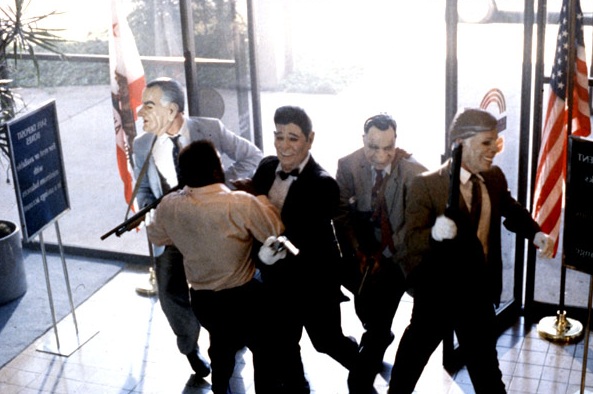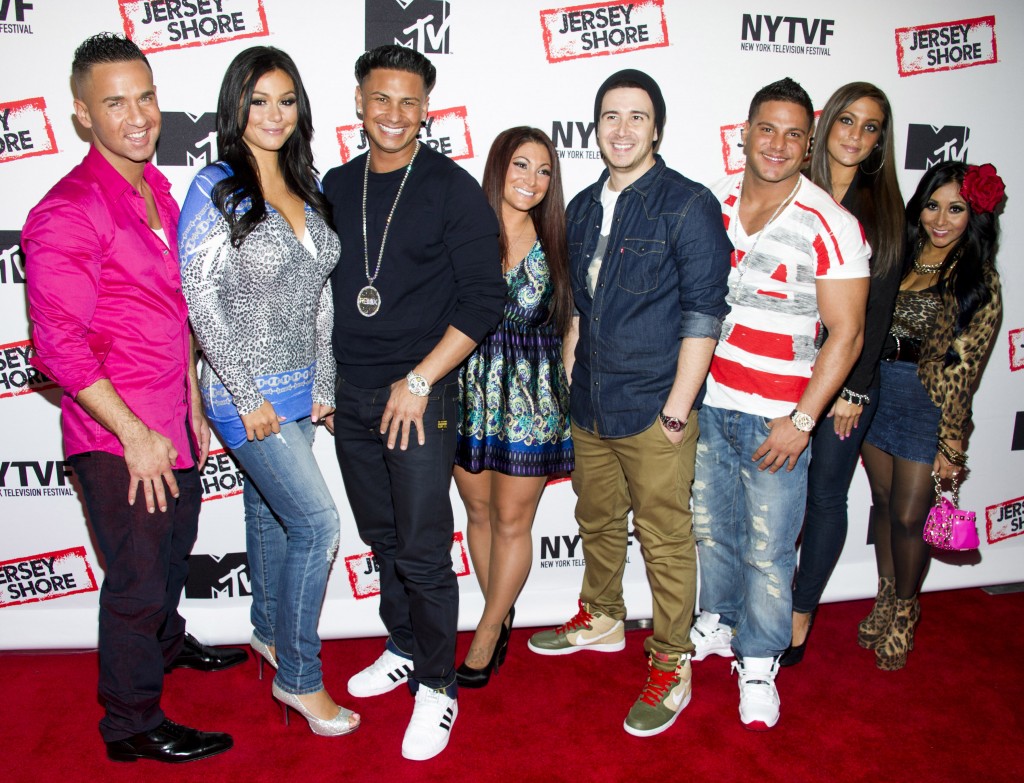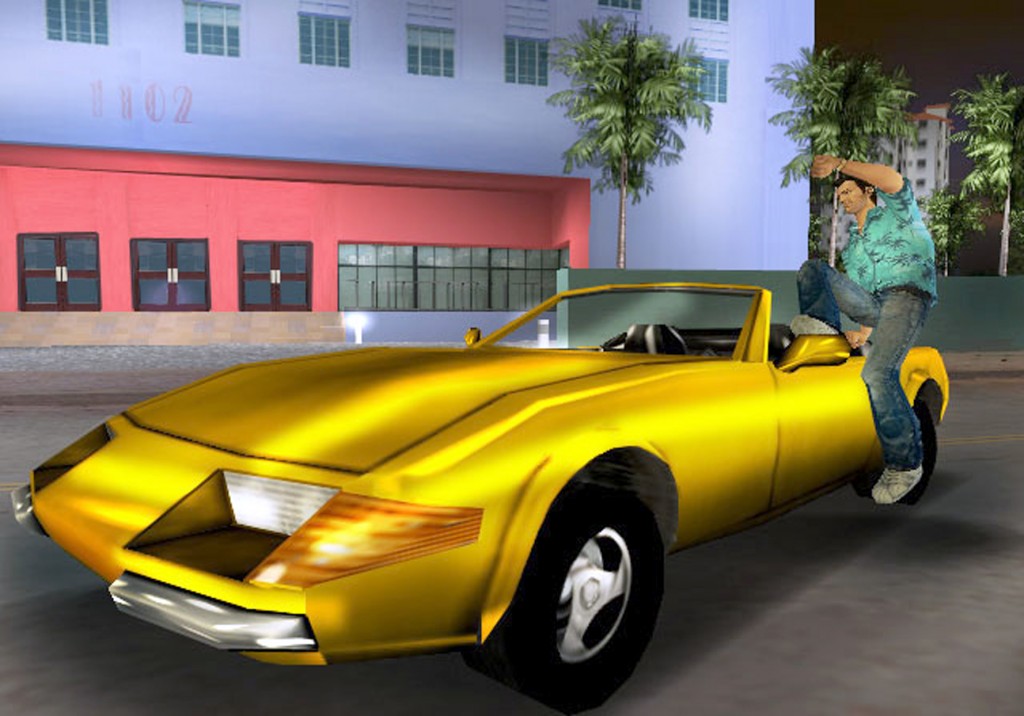
(PHOTO: David Karp/AP Photo)
At New York Magazine, Steve Fishman has an incredible profile on Alex Rodriguez with remarkably thorough investigative research into the Biogenesis case and Rodriguez’s legal battle with Major League Baseball.
Fishman’s article does an amazing job connecting all the very skeevy dots in the A-Rod saga. Put together, it almost sounds too absurd to be true, except in this case it’s all entirely believable because of how ridiculous the whole thing has been since the get-go. And assuming it is true, the story confirms that the saga is every bit as slimy as it has seemed, if not more so.
Here are five seedy new elements of the A-Rod saga, from Fishman’s report:
1. Convicted bank robber Gary Jones
 Bank robbers, as depicted in Point Break. (PHOTO: 20th Century Fox/Screengrab)
Bank robbers, as depicted in Point Break. (PHOTO: 20th Century Fox/Screengrab)
In March, Jones met (MLB investigator Dan) Mullin at the Cosmos Diner on East Atlantic Boulevard in Pompano Beach. Jones and Mullin sat at a booth, Jones in his usual shorts. Mullin pushed a yellowish envelope across the table. Inside were $100 bills in bands of $1,000, which, in turn, were in bands of $10,000….
Jones, who has a flawless instinct for such things, knew that sliding cash across a table didn’t exactly look like the way an upstanding institution should do business. It was, in his mind, one more opportunity to be monetized. From a booth across the room, Jones had a buddy film the meeting on an iPhone, which he later sold to (Alex) Rodriguez for $200,000, who planned to use it to focus attention on MLB’s tactics.
The biggest revelation in the report by far is the introduction of Gary Jones, a convicted former bank robber who got into the tanning salon business after three years in prison. Jones seems to have single-handedly engineered so many of the weirdest aspects of the public narrative.
The guy basically played both A-Rod and Major League Baseball. He intentionally acted like a rube, then sold acquired evidence to MLB investigators for cash at a diner, videotaped the exchange, and sold the film to Rodriguez. And he masterminded the plot for all of a few hundred thousand dollars, undoubtedly a huge windfall for an ex-con and tanning-salon scenester but pennies compared to the money that A-Rod and MLB are working with.
The article strongly suggests Jones stole the evidence from a car (more on that in a bit), and yet he somehow comes off as one of the few characters involved that isn’t evil or pathetic. He’s almost a perfect anti-hero, a shrewd opportunist who dragged — or perhaps just ushered — both sides of the investigation into the muck with him. Oh, and it all happened because of…
2. Tanning-salon circles
 The cast of the Jersey Shore, one celebrated tanning-salon circle. (PHOTO: Charles Sykes/Invision/AP PHOTO)
The cast of the Jersey Shore, one celebrated tanning-salon circle. (PHOTO: Charles Sykes/Invision/AP PHOTO)
(Porter) Fischer spent a surprising amount of his cash at tanning salons. He liked a spray-on tan. “Some people like to paint, some people like origami; I enjoy tanning. I’ll take the jokes,” he told a friend.
The whole Biogenesis story makes so much more sense now that we know that most of the background players met through South Florida tanning salons. Imagine Fishman’s article is being read to you by an oompa-loompa orange guy in a half-zipped track jacket with no t-shirt on underneath and everything just seems to fit.
Try to follow this: Porter Fischer met Anthony Bosch at a Coral Gables tanning salon where Fischer was a regular. Bosch, posing as a doctor, ran his anti-aging clinic out of the back, and helped Fischer pursue “a Stallone body.” Fischer lent Bosch $4,000 to expand his business, then took Bosch’s notebooks to the Miami New Times when Bosch didn’t immediately pay him back.
Jones and Fischer were also friends through the tanning industry, and Fischer confided in Jones. Then Jones took advantage of Fischer’s hobby in one of history’s greatest…
3. Tanning-salon setups
 (PHOTO: Rockstar Games/Screengrab)
(PHOTO: Rockstar Games/Screengrab)
Jones knew just what buttons to push. He had a new spray-on tanning solution. “Hey, you need to try this new solution of mine. Great color,” Jones said.
On his way home, Fischer met Jones at a Boca tanning salon, where he tried the new solution. A half-hour or so later, Fischer came outside to find the trunk of his car pried open. Four boxes of documents had disappeared, along with a laptop and a handgun.
Jones doesn’t say exactly how he took possession of four boxes of documents that Fischer intended to hand over to the state health department for its investigation of Anthony Bosch. But while Fischer was on his way to give Bosch’s notebooks to the state, Jones suggested he stop at a tanning salon to try out new spray-tan solution.
New spray-tan solution was obviously more important to Fischer than the state investigation in which he was involved, so he stopped to meet Jones for a treatment en route. When he finished, presumably with rich, ochre-toned skin, he found his trunk pried open and the documents missing.
4. Food metaphors!

(PHOTO: USA TODAY Sports)
Bosch said that food was code for testosterone and HGH. Rodriguez insisted that food meant food—the kind of nutritional edge he pursued across the planet….
On April 2, 2012, Bosch uses the term meds in a message to Rodriguez. “Not meds dude. food,” comes the reply a few minutes later.
Text messages extracted from Bosch’s BlackBerry show A-Rod and Bosch in frequent communication about “food,” including detailed discussion about the specific 15-minute interval in which A-Rod should “eat” the “food” before game time. And A-Rod says it’s not code and he was really talking about food, despite texts that explained how the “food” made him feel “explosive.”
5. Pretty much everything

(PHOTO: Mary Altaffer/AP Photo)
Selig dispatched the head of his investigations unit, a former New York City cop named Dan Mullin, who had a team of a dozen investigators working for him, along with local private detectives.
Some witnesses were offered six-figure sums for information or documents—Carbone said he was offered $200,000. If money didn’t work, tougher tactics were tried.
Just read the whole article, seriously. It’s all so incredibly sketchy and it manages to expose and explain so many of the story’s odd twists and turns. Outside of Rodriguez’s ex-wife Cynthia, basically everyone mentioned in the Fishman’s report is guilty of something illegal or immoral or unethical at some stage along the way.
So nothing terribly surprising, then. It’s just amazing to see it all spelled out so clearly.
Other FTW stories we think you’d like:
Check out out more athletes behaving badly …
[sigallery id=”f341badda5f24f3ed2052e02829d838f” type=’sigallery’]







